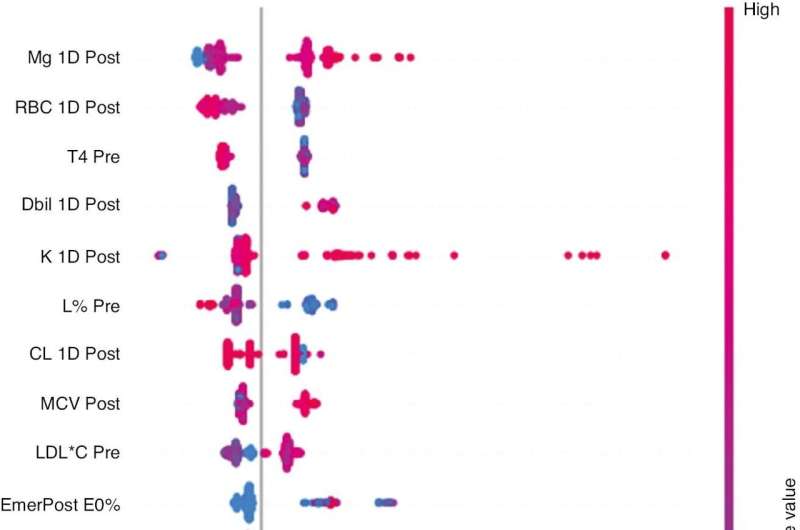This article has been reviewed according to Science X's editorial process and policies. Editors have highlighted the following attributes while ensuring the content's credibility:
fact-checked
proofread
Predicting development of postoperative acute kidney injury after coronary artery bypass grafting

Cardiac surgery-associated acute kidney injury (CSA-AKI) is a major complication that increases morbidity and mortality after cardiac surgery. Most established predictive models are limited to the analysis of nonlinear relationships and do not adequately consider intraoperative variables and early postoperative variables.
Non-extracorporeal circulation coronary artery bypass grafting (off-pump CABG) remains the procedure of choice for most coronary surgeries, and refined CSA-AKI predictive models for off-pump CABG are notably lacking. Therefore, this study used an artificial intelligence-based machine learning approach to predict CSA-AKI from comprehensive perioperative data.
In total, 293 variables were analyzed in the clinical data of patients undergoing off-pump CABG in the Department of Cardiac Surgery at the First Affiliated Hospital of Guangxi Medical University between 2012 and 2021. According to the KDIGO criteria, postoperative AKI was defined by an elevation of at least 50% within seven days, or 0.3 mg/dL within 48 hours, with respect to the reference serum creatinine level.
Five machine learning algorithms—a simple decision tree, random forest, support vector machine, extreme gradient boosting and gradient boosting decision tree (GBDT)—were used to construct the CSA-AKI predictive model. The performance of these models was evaluated with the area under the receiver operating characteristic curve (AUC). Shapley additive explanation (SHAP) values were used to explain the predictive model.
The three most influential features in the importance matrix plot were 1-day postoperative serum potassium concentration, 1-day postoperative serum magnesium ion concentration, and 1-day postoperative serum creatine phosphokinase concentration.
GBDT exhibited the largest AUC (0.87) and can be used to predict the risk of AKI development after surgery, thus enabling clinicians to optimize treatment strategies and minimize postoperative complications.
The findings are published in the journal Cardiovascular Innovations and Applications.
More information: Sai Zheng et al, Machine Learning for Predicting the Development of Postoperative Acute Kidney Injury After Coronary Artery Bypass Grafting Without Extracorporeal Circulation, Cardiovascular Innovations and Applications (2023). DOI: 10.15212/CVIA.2023.0006



















